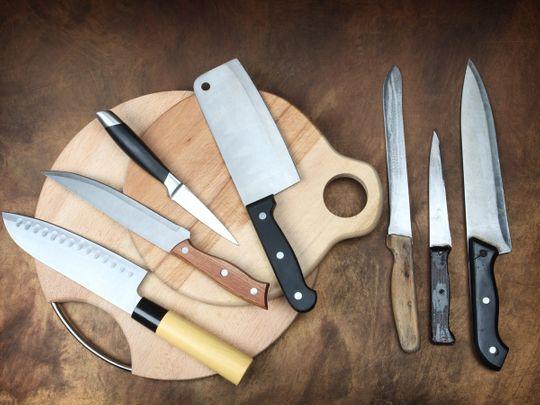
Kitchen knives are an essential tool for any chef or home cook. But with so many different types, brands, and features to choose from, it can be tough to know which knife is right for you. In this guide, we’ll help you sort through the options and find the best kitchen knives for your needs. Chef’s knives are the all-purpose workhorses in the kitchen. They’re great for slicing, dicing, and chopping all sorts of ingredients. If you only have one knife in your kitchen, a chef’s knife is the way to go. Paring knives are smaller and more manoeuvrable than chef’s knives, making them ideal for peeling fruits and vegetables and trimming meat.
- Bread knives have serrated blades that can easily slice through crusty slices of bread.
- Carving knives are long and narrow, with a sharp point that’s perfect for slicing meat.
- Cleavers are large and heavy knives designed for hacking through bones.
- Butcher’s knives are similar to cleavers, but they’re thinner and lighter, making them better suited for trimming meat.
When it comes to chef’s knives, the two most important factors to consider are the blade shape and the size. Kitchen knives come in a variety of shapes and sizes, so it’s important to choose the one that best suits your needs. The most common blade shapes are straight, serrated, and Santoku. Straight blades are ideal for slicing and dicing, while serrated blades are better for bread and other tougher foods. Santoku blades are a versatile option that can be used for both slicing and dicing.
Kitchen Knife Blade Material
Kitchen knives are commonly made out of one of three types of steel: high carbon, stainless, or tool. Which type is best for you depends on how you plan to use and care for your knives. High carbon steel is popular among professional chefs because it is easy to sharpen and holds its edge well. However, this kind of steel is also more likely to rust if it is not properly cared for. Stainless steel is a good choice for home cooks who want a knife that is low maintenance. This type of steel does not need to be oiled like high carbon steel and it is less likely to rust. Tool steel is the strongest type of kitchen knife blade material, but it is also the most expensive in online knife store. This kind of steel is not as easy to sharpen as the other two types and it is more likely to chip.
Kitchen Knife Handle Material
The most common materials used for knife handles are wood, plastic, and metal. Each material has its own advantages and disadvantages. Wood handles are classic and elegant, but they can require more care than other materials. Plastic handles are durable and easy to care for, but they are not as comfortable to hold for long periods of time. Metal handles are the most durable option, but they can get very cold in your hand during use.
Kitchen Knife Blade Sharpness
One of the most important things to consider when buying kitchen knives is how sharp the blades are. A dull blade will make it much harder to prep food and can be dangerous to use. Kitchen knives can lose their sharpness over time with regular use, so it is important to know how to sharpen them. The best way to sharpen a kitchen knife is with a honing rod and a sharpening stone.
Leave a Reply